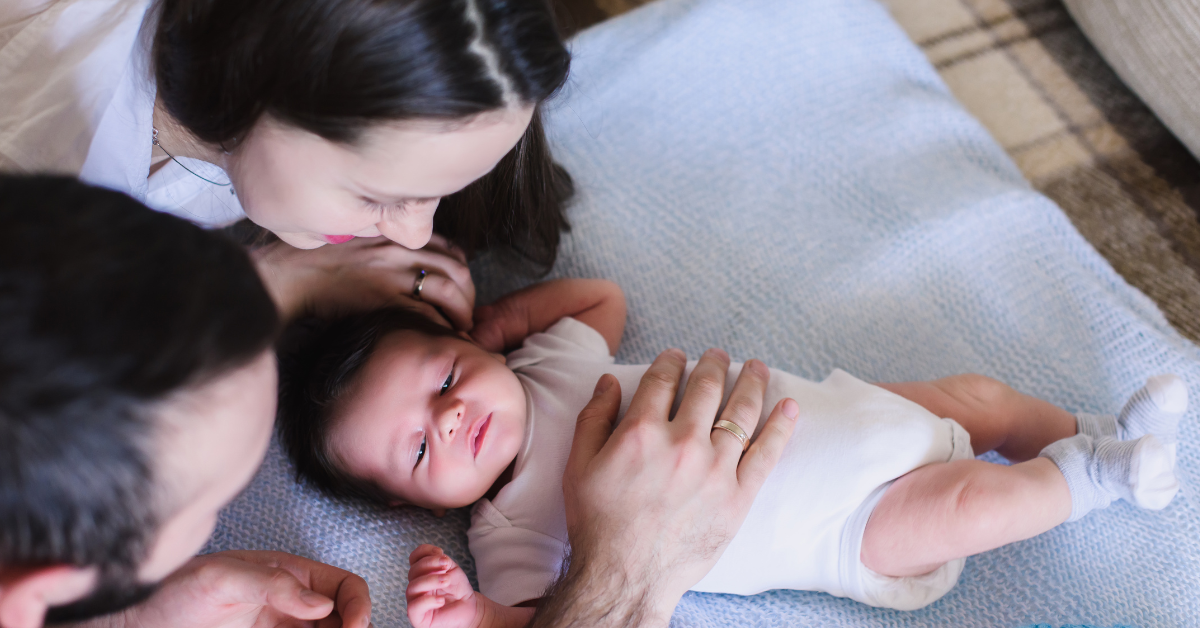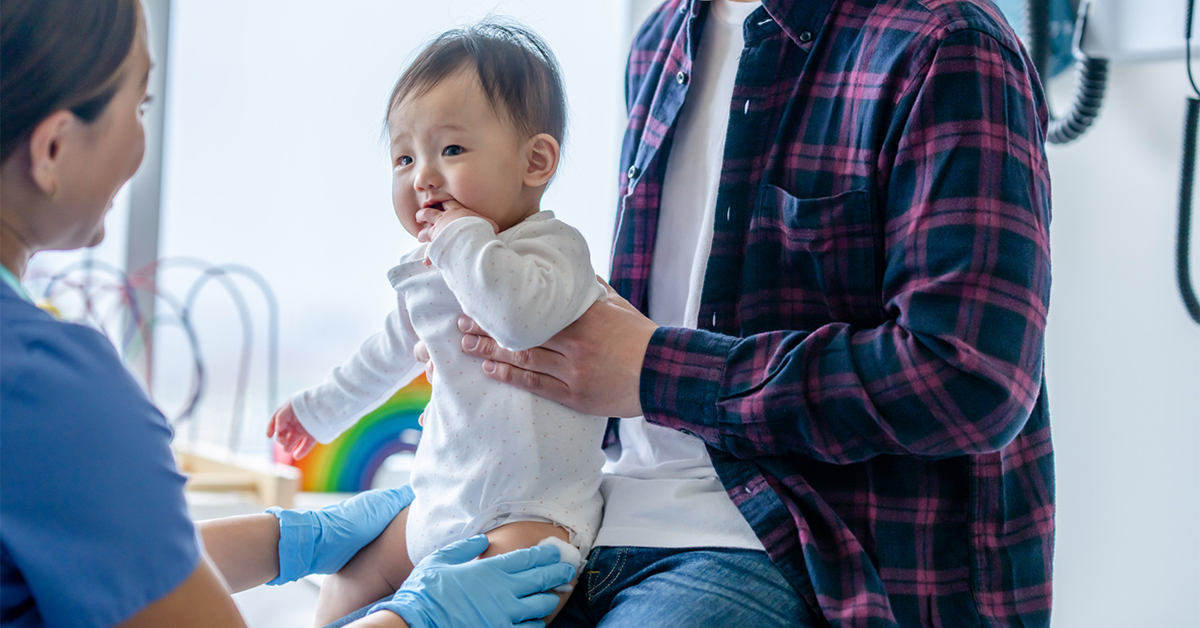For many new moms, the year-old birthday is a relief: by definition, sudden infant death syndrome or SIDS doesn’t happen after that milestone. Babies are most at risk for SIDS between one and four months old—90 percent of cases occur in babies under six months.
Researchers are not sure what causes SIDS or why the risk drops when it does. That’s probably why it’s so nerve-wracking for parents of infants. While there’s no definitive way to prevent SIDS, there are specific steps you can take to reduce your baby’s risk.
- Back to sleep. Since 1992, the number of infant deaths from SIDS has declined by more than half. That’s the year when the American Academy of Pediatrics recommended putting babies to sleep on their backs. Always place your baby on their back to sleep both for naps and at night. The back sleep position is the safest possible for all babies until age one.
- Firm, flat sleep surface. Use a firm and flat sleep surface, such as a mattress in a safety-approved crib, with a tight-fitting sheet. Never place a baby to sleep on soft surfaces, such as a couch, sofa, pillow, quilt or blanket—they can be very dangerous for babies. Do not use a car seat, stroller, swing, infant carrier, infant sling or similar products as a baby’s regular sleep area.
- Bare is best. Those matching crib bedding sets are adorable, no doubt. But is a cuter nursery worth risking your baby’s safety? To reduce the risk of SIDS, your baby’s crib mattress should be covered by a fitted sheet with no other bedding or soft items in the sleep area.
- Room-share with parents. In 2016, the American Academy of Pediatrics (AAP) updated its sleep recommendations for infants. The AAP recommends that babies share a bedroom with their parents—but not the same sleeping surface—until the baby turns on (preferably), but at least for the first six months. Room-sharing decreases the risk of SIDS by as much as 50 percent.
If you bring your baby into your bed for feeding or comforting, remove all soft items and bedding from the area. When finished, put your baby back in their separate sleep area. Be mindful of how tired you are during these times, so you don’t fall asleep with your baby in your bed. Note: There is no evidence for or against devices or products that claim to make bed-sharing “safer.”
- Breastfeed, if possible. Babies who breastfeed, or are fed breast milk, are at lower risk for SIDS than are babies who were never fed breast milk. The longer you exclusively breastfeed your baby, the lower the risk of SIDS.
- Pacifier for naps and bedtime. Pacifiers reduce the risk of SIDS. But don’t attach the pacifier to anything that carries a risk of suffocation, choking or strangulation. Wait until breastfeeding is well established before offering a pacifier (usually three to four weeks). If you’re not breastfeeding, offer a pacifier as soon as you’d like, but don’t force the baby to use it. If the pacifier falls out, it’s okay not to put it back in the baby’s mouth.
- Marketing products aimed at reducing SIDS is just that —marketing. Do not use home monitors or commercial devices, including wedges or positioners, marketed to reduce the risk of SIDS. Definitely don’t use ones that go against the AAP’s sleep recommendations.
- Avoid baby’s exposure to smoke. Do not smoke or allow others to smoke around your baby to reduce the risk of SIDS.
- Vaccinate. Follow guidance from your Welia Health provider on your baby’s vaccines. Vaccinated babies are at lower risk for SIDS.
- Watch overheating during sleeping. Don’t let your baby get too hot during sleep. Dress your baby in sleep clothing, such as a wearable blanket (or sleep sack). Dress baby appropriately for the environment, but don’t overdo it. Parents and caregivers should watch for signs of overheating, such as sweating or feeling hot to the touch.
- Tummy time. Supervised, awake tummy time—when someone is watching—is recommended daily to facilitate development. Supervised tummy time helps strengthen your baby’s neck, shoulders, and arm muscles.
There are also ways to reduce the risk of SIDS before your baby is even born. Get regular prenatal care during pregnancy. Plus, avoid smoking, drinking alcohol, and using marijuana or illegal drugs during pregnancy and after the baby is born.
If you have any questions about SIDS or ways to reduce the risk for SIDS, just ask your Welia Health provider or your baby’s pediatrician.














